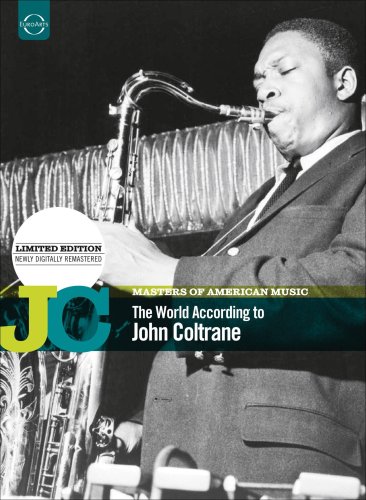
As someone who has never been a big jazz video guy, I seem to be finding more and more time for the format. One of the holdbacks for me has traditionally been the concept of sitting down to watch recorded music: I generally have the stereo on as I do various things around the house. Some would regard this passive music listening or using music as background noise, but I like integrating music into my day-to-day life rather than making it an all-or-nothing proposition.
Watching the second batch of Masters of American Music DVDs, I'm reminded of the biggest assets that these hourlong pieces have to offer: I'm able to see live footage of artists whose music I know well but have never seen perform live. No kidding, right? My only defense is that I didn't need the DVDs to remind me that I wasn't there to enjoy some amazing gig in real time. Since these are documentaries -- 'The World According to John Coltrane,' 'Sarah Vaughan: The Divine One,' 'Count Basie: Swingin' the Blues' and 'Bluesland: A Portrait in American Music' -- the idea is also that you can learn something about the subject artist.
As someone who has listed John Coltrane as his top dog for years now, I didn't learn a whole lot from the narrative of the DVD. But watching the live footage was another thing altogether: I'd seen bits of some of the stuff in Ken Burns's 'Jazz' series but was reminded once again of the intensity with which Coltrane played. You can hear it in every note of his music on records, but watching extended segments of him throwing his entire body into the act of creating music was beyond inspiring.
Of the guest interviewees who spoke about the man, I thought that Roscoe Mitchell and Rashied Ali had some particular salient points. Alice Coltrane, who speaks in audio clips, made an interesting remark at the end of the film about the changes in her husband's music over time -- saying he sacrificed audience acceptance in playing the extremely intense music of his final phase, but there was no way he could turn back. She didn't make it sound like he painted himself into a corner, but as an innovator he was unable to backtrack because it was the search that always fed his music.
Someone I didn't know as much about was Sarah Vaughan. So the Divine One was much more of a biographical revelation. Featuring a lot of material of decent video quality, the documentary did a nice job of illustrating the regard in which she was held by other musicians and gave some time to her background growing up in Newark, N.J. The talent I knew about, and I was familiar with some of her songs, too, but this DVD offered a well-rounded look at some of the singer's private side as a person who, like the rest of us mortals, had trouble with her relationships, could be forgetful, and cherished her time alone in those rare moments she wasn't on the road.
As the undisputed “King of Swing," Count Basie is at the top of any list of jazz legends. To listen to everyone talk about Basie here, it's apparently all about the blues, tempos and ability, not to mention Basie's less-is-more approach to piano playing. What actually was happening, though, was that this documentary defined the meaning of swing. There're a lot of good interviews, including ones with Joe Williams, Harry “Sweets" Edison and Jay McShann. More than anything, one comes away with thinking that Count Basie was a good guy, a great bandleader and a player who knew how to swing. That about covers it in my book.
Contrary to its title and cover (featuring B.B. King),' Bluesland: A Portrait in American Music' isn't exactly about blues in the straight sense of the genre. There are performances by Son House, Muddy Waters and Sonny Boy Williams, but there are also ones by early jazz people such as Bessie Smith, Jimmy Rushing and others. As such, this 85-minute documentary illustrates the connection between jazz, early R&B and blues, with the blues tradition being the forebear in many ways. The footage is strong overall, including beautiful little bits of Bessie Smith and Bukka White, as well as some interview footage of the great Willie Dixon.
All four are worth the time to sit down and watch. It's really just a matter of what your interests are. For me, I'll go back to that Coltrane footage first, but I learned some stuff from the others, too.
For more information contact All About Jazz @ Spinner.

























